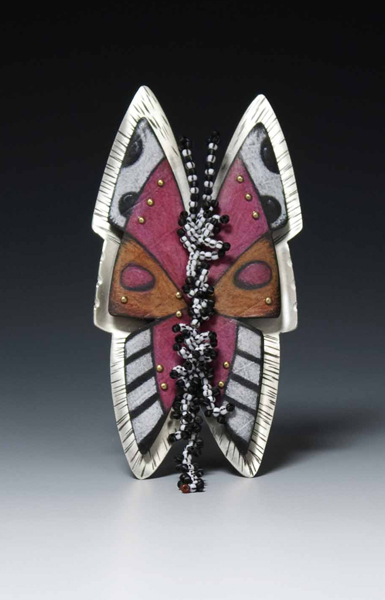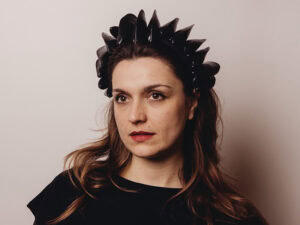 Tilling Time/Telling Time is the latest jewelry exhibition held at the Facèré Jewelry Art Gallery. The exhibition is in conjunction with the launch of Karen Lorene’s newest novel of the same name. The show features jewelry artists Kit Carson, Jude Clarke, Kevin Crane, Marita Dingus, Robert Ebendorf, Cynthia Toops, Roberta and David Williamson, Deb Karash, and Anne Fischer. Karen loves words and jewelry separately and together, but always with a story in mind.
Tilling Time/Telling Time is the latest jewelry exhibition held at the Facèré Jewelry Art Gallery. The exhibition is in conjunction with the launch of Karen Lorene’s newest novel of the same name. The show features jewelry artists Kit Carson, Jude Clarke, Kevin Crane, Marita Dingus, Robert Ebendorf, Cynthia Toops, Roberta and David Williamson, Deb Karash, and Anne Fischer. Karen loves words and jewelry separately and together, but always with a story in mind.
Susan Cummins: Karen, you have done a number of shows relating words and jewelry, such as Louder than Words, Woman Working Words, and your series of publications called Signs of Life. Now you have published your own novel called Tilling Time/Telling Time. Can you tell us what it is about?
Karen Lorene: The novel is based on a grandfather I never saw, never met. I knew only one thing about this man: he ran away with the neighbor lady. And so begins a made-up tale about a granddaughter and a grandmother, each telling her story about falling in love, marrying, and then how life, as life is wont to do, comes along and hits each upside the head and makes each a strong, independent woman.
Why did you decide to write this particular story?
Karen Lorene: Half of my life is writing. Ideas appear, and then words, and then, strangely enough, a novel. Creating a world, populating it, following where characters lead is like indulging in the finest chocolate, the finest meal.
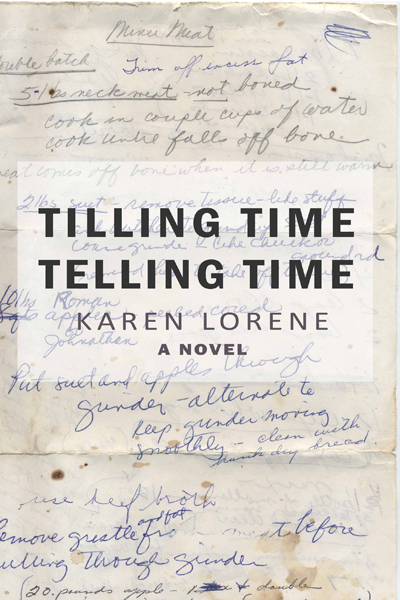
Susan Cummins: Karen, you have done a number of shows relating words and jewelry, such as Louder than Words, Woman Working Words, and your series of publications called Signs of Life. Now you have published your own novel called Tilling Time/Telling Time. Can you tell us what it is about?
Karen Lorene: The novel is based on a grandfather I never saw, never met. I knew only one thing about this man: he ran away with the neighbor lady. And so begins a made-up tale about a granddaughter and a grandmother, each telling her story about falling in love, marrying, and then how life, as life is wont to do, comes along and hits each upside the head and makes each a strong, independent woman.
Why did you decide to write this particular story?
Karen Lorene: Half of my life is writing. Ideas appear, and then words, and then, strangely enough, a novel. Creating a world, populating it, following where characters lead is like indulging in the finest chocolate, the finest meal.
My experience in writing is that one writes what one knows. In this case I had a grandfather about which I had that one-sentence bit of knowledge. Since our family never spoke of him, I created his story by speaking of his wife and her granddaughter. Perhaps it is a way to fill in the blanks. I made up what I didn’t know. One wants answers. A writer has the privilege of creating answers.
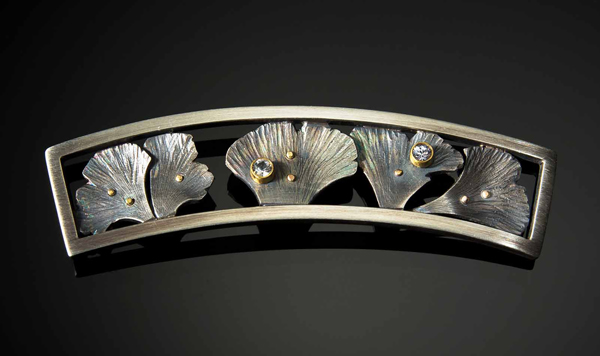
Karen Lorene: In the two novels I have written, and the one in progress, jewelry is incidental, almost nonexistent. No pictures. No reference to the jewelry in the show. While the jewelry artists were creating their work, telling their story, I was editing and putting the final touches on the novel.
However, my four previous books—Buying Antique Jewelry: Skipping the Mistakes; Building a Life, Building a Business; Celebrating 70 and the ABeCeDarian (probably my favorite)—depend on jewelry. All of the nonfiction books are about jewelry. And, of course, Signs of Life, our literary magazine, uses jewelry as its inspiration.
So if I understand correctly, the exhibition is an additional event related to the launching of the novel. Why are you doing that? Did you give the artists included in the show the novel Tilling Time/Telling Time to read in order to make something specific for the show?
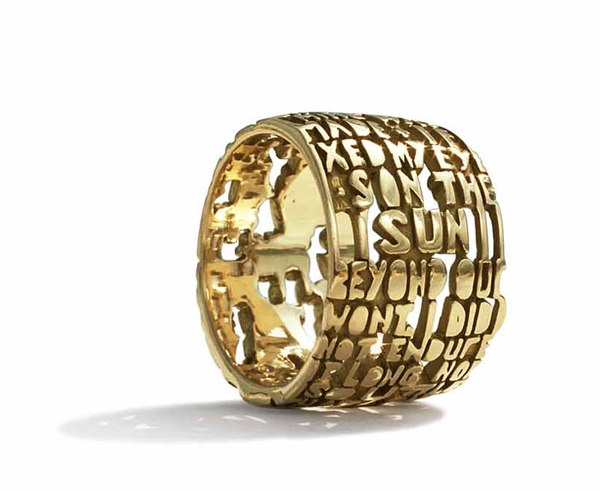
- Signs of Life, our literary magazine, joins poetry, flash fiction, and essays with jewelry art.
- Dancing With Bear, my first novel, was combined with a show titled Women Working Words. In that instance, the invited women artists were asked to use words in their jewelry.
- ABeCeDarian is an ABC book. Twenty-six artists created a single piece of jewelry for each letter of the alphabet. I wrote all 139 words!
- Celebrating 70 focused on 70 pieces of jewelry art, each referencing a single year. In this instance the artists wrote the words.
- Telling Time/Tilling Time, my second novel, is paired with an exhibition of jewelry art that speaks to the jewelry artists’ interpretations of history and time.
Sorry to say, neither book was finished in time for the jewelry artists to read. Our directives were thematic but open.
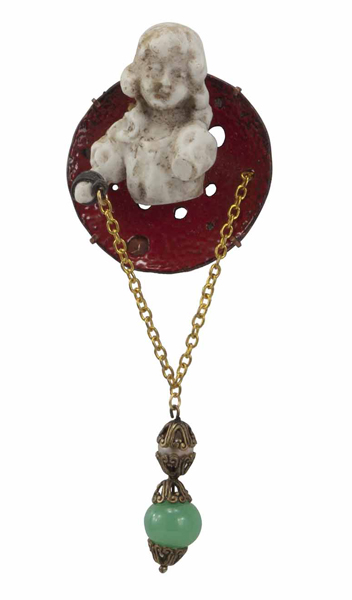
Karen Lorene: Yesterday, my second novel arrived from the publisher. On the third page, all by itself, is a quote from Joan Didion: “We tell ourselves stories in order to live.” She said it precisely.
I was just listening to a lecture by Rebecca Solnit that took place in Seattle recently. She talked about stories and how they can change us, and that the stories we tell ourselves can profoundly affect who we are. What is the story contemporary jewelry tells itself?
Karen Lorene: Aha, the book I have yet to write, but the effect in which I totally believe. Jewelry art defines those who wear it, invites comment and conversation, gives meaning to the wearer, and, should it be a gift, binds the giver and the receiver. All magic.
What is the story that contemporary jewelry should be telling itself?
Karen Lorene: I think it is the artist who should be telling his or her story through the work. I, as a gallery owner, have the privilege of passing that story along.
I guess what I am asking here is a bigger question about the field. As a field we are telling ourselves we are insulated and we don’t pay attention to the world at large. This is a story that probably keeps us insulated and not paying attention … Instead, what story would inspire us to have a different view of what contemporary jewelry is, what is its history, what is its story? How would you tell that story?
Karen Lorene: The jewelry world owes it to itself to encompass the world from which it grows. Jewelry art should celebrate the fact that it is part of a larger world of makers, creators, and collectors. In the best of worlds, jewelry art reaches out to involve maker, wearer, and observer. Perhaps jewelry art is perceived by some to be an insulated field because jewelry art makes such an intimate personal statement for maker and wearer. The art is the maker’s story. However, the choice to wear jewelry art spreads the story and expands the story by the wearer adding to the experience. And finally, jewelry art invites the observers to join in that circle. At its heart, jewelry art is all about engagement. It is by its very nature an extroverted and community-based form of expression.
Cross-pollinating in the arts expands our community and audience. Take for instance this image of a jewelry art piece by Marcia Meyers, which is part of this fall’s Signs of Life show. This image spurred the following poem by the previous Washington State Poet Laureate, Kathleen Flenniken:
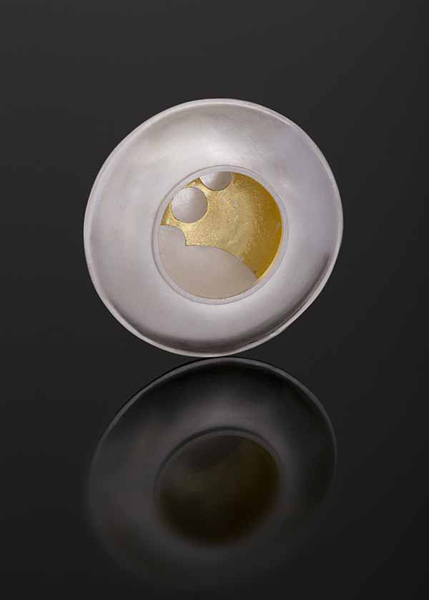
Where you’re going, the sky dangles a double moon—
twice the lunacy and so far away.
There’s little I can pack for you, no lucky charm
or incantation, only years and years of daily instruction
I hope you’ve heard. I’ll be the waving hand
and hesitation in the window, then I end
and the road begins. If you grow lonely for me,
rest your cheek on the breast of a gold grass hill
or the breast of a sand dune erased and rewritten
by the wind, look for the shape of me in an ocean swell
and decide that’s all you need,
and I’ll imagine the trinkets you leave behind
as a quieter version of you. If I can.
And with my long arm raise my shield,
larger than any moon, shining
because I’ve polished it in my mind
since before you were born.
At the opening, when this poem is read, with the image by Marcia Meyers on the screen behind the reader, the audience will experience a connection they never dreamed would happen! It will be “goose-bump” time and we will all share in that moment of pure connection between the audience, the jewelry art, and the poetry. That moment connects us all.
Thank you.
